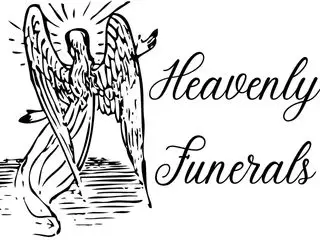Table of Contents
Walking through a cemetery can often feel like perusing a vast, outdoor library, where each headstone is a book with a story to tell. Imagine stumbling upon a broken headstone—what mysterious tales could this stone fragment be whispering? The meaning of a broken headstone can range from historical wear and tear to symbolic gestures representing a life that ended too soon. Just as a snapped twig signals a trail’s disruption, a fractured marker in a graveyard similarly signifies interruption—of life, of history, of a narrative that was once whole.

From weather’s relentless erosion to the more scandalous acts of vandalism, the causes behind these toppled monuments are as varied as the etchings on their faces. Beyond mere decay and damage, sometimes the very design of a headstone incorporates a broken appearance to embody the poignant theme of mortality and the abrupt end to the story of one’s life. Analyzing these stone-bound epitaphs gives onlookers a chance to decode a deeper interconnectedness between the departed, the bereaved, and the cultural context they existed within.
Key Takeaways
- Broken headstones in a cemetery may symbolize life’s untimely interruptions.
- Damage to gravestones can result from natural, unintended, or deliberate human actions.
- The design and state of headstones offer insights into cultural practices surrounding death.
Cultural Significance of Headstones

Headstones, or gravestones, are rich with societal messages and cultural nuances. They embody not just markers of where people lay to rest but also express collective attitudes towards death and commemoration.
Societal Perceptions of Death
In many cultures, a gravestone isn’t merely a rock; it’s a statement. A stroll through a cemetery is like reading a town’s history, etched in stone. People love to express themselves, it seems, even in the afterlife. Gravestone symbols range from the profound to the quirky, with everything from stoic crosses signaling faith to carvings of smartphones for the eternally online.
The symbols found in cemeteries often reveal societal norms around mortality. For example, clasped hands might suggest a farewell or the unity of life and death, while a depiction of an open book often denotes a life fully lived. Specific motifs often convey membership in various fraternal organizations, like the compass and square for the Freemasons or three interlocking rings symbolizing the Odd Fellows.
Historical Evolution of Gravestones
Historically, tombstones have progressed from simple rock piles to elaborate sculptures. Early markers were often just fieldstones with maybe a name or initial. As societies evolved, so did the complexity and diversity of gravestone design, often reflecting technological and artistic progresses.
Here’s a brief timeline of gravestone trends that reflect cultural shifts:
- 17th Century: Mostly simple markers with minimal carvings due to religious beliefs.
- 18th Century: Started seeing more elaborate iconography, such as skulls turning into winged cherubs, symbolizing the soul’s ascent to heaven.
- 19th Century:
- Peaks in ornate stones with elaborate inscriptions and carved images.
- Growth in statuary and mausoleums for the well-to-do.
- 20th Century: Introduction of new materials like marble and bronze.
- 21st Century: Personalized engravings that reflect individual hobbies, interests, and even QR codes linking to online memorials.
It’s clear that the more people can afford and fabricate, the more their grave markers become a canvas for cultural expression.
Symbolism Etched in Stone
https://www.youtube.com/watch?v=i4cEIgNf8DE&embed=true
In cemeteries, headstones often tell a tale beyond names and dates. The symbols carved into the stone can reveal a lot about the deceased’s beliefs, values, or life story.
Religious Icons and Their Meanings
- Cross: One might say it’s the ultimate icon of faith, signaling Christian belief.
- Angel: Messengers between heaven and earth, angels often signify guardianship.
- Dove: Peace and the Holy Spirit are often fluttering about where doves are depicted.
- Star of David: Not to be outshone, this star marks Jewish faith.
Secular Symbols of Life and Death
- Heart: Signifying love, it literally wears one’s heart on their grave.
- Anchor: Hope may seem adrift at sea, but an anchor grounds it firmly in reality, often associated with a seafarer’s life or the Christian virtue of hope.
- Ivy: Nothing clings to life quite as stubbornly as ivy, symbolizing immortality and the soul’s eternal embrace.
Representation of Professions and Affiliations
- Military Insignia: They fought the good fight; these emblems honor service and sacrifice.
- Acorn: A tiny nut for big aspirations; it often represents strength and potential.
- Lamb: Innocence incarnate, little lambs typically denote a child’s gravestone.
- Woodmen of the World: Exclusive to members of the fraternal organization, this symbol shows one has chopped their last log.
Decoding the Broken Headstone
https://www.youtube.com/watch?v=CwdUwevayRU&embed=true
When a headstone splits, chips, or falls, it’s not just an oopsie-daisy moment—it often conveys a message about the impermanence of life and the relentless march of time. Now, let’s unravel some of the quirky whispers of those silent stone storytellers.
Impermanence and the Passage of Time
Curiously enough, headstones aren’t immune to the hands of time. Whether it be marble, granite, or limestone, they age, they weather, and sometimes, they crack under the pressure—quite literally. It’s a stark stone-faced reminder that nothing, not even a solemn block of rock, can escape time’s tick-tocking tyranny.
- Stone types prone to the ravages of time:
- Marble: tends to succumb to acid rain’s gnawing, leaving inscriptions illegible—rudely interrupted stories, if you will.
- Granite: more resilient, yet not invincible—think superhero with a hidden weakness.
- Limestone: dissolves into a bubbly mess if Mother Nature throws a tantrum.
Damage Interpretations and Superstitions
Headstones, they say, are the final Facebook status update. And a broken one? Well, that’s ripe for interpretation—be it a significant symbol or spooky superstition. Let’s peek behind the gravestone gossip curtain.
- Busted Headstone Superstitions and Symbology:
- Book: Once neatly bound; now unnervingly unhinged—it suggests an unfinished life chapter or an abrupt end to one’s life story.
- Urn: A symbol of the soul’s containment, cracked to signify release (or perhaps a ghostly jailbreak).
- Gravestone: If split, might hint at a family divide or, for the theatrically inclined, a supernatural force’s escape route.
- Skull: Creepy when intact; when broken, it’s losing its mind—literally.
- Hourglass: Always a race against time, but a damaged one? It says, “time’s up,” with a pinch of dark humor.
Personal Narratives in Gravestone Imagery
Gravestone imagery often encapsulates the essence of individuals’ lives. Through symbols and carvings, they tell stories of love, identity, and affiliations, providing a unique insight into the deceased’s personal narrative.

Tales of Love and Loss
When strolling through a cemetery, one may encounter gravestones that seem more like love letters set in stone. Markers often bear symbols of hearts or clasped hands, emphasizing bonds of marriage and partnership that extend beyond life. A reader interprets not just names and dates, but also tales of:
- Love: Heart symbols or two joined rings speak to a love celebrated and cherished.
- Loss: Stones sometimes feature a broken column or a wilted flower, illustrating the interruption of life and the grief of survivors.
For those interested in fraternal bonds, symbols like links of chain on a grave marker can indicate membership in the Independent Order of Odd Fellows, reflecting a commitment to brotherly love and truth even in death.
Reflections of Individual Identity
Each stone is a canvas, celebrating the unique identity of the person it commemorates. They serve as a memorial to an individual’s story, worldview, or accomplishments. Life’s achievements can be carved as literal representations or symbolic metaphors. Examples include:
| Symbol | Represents |
|---|---|
| Books | Scholarly pursuits or education |
| Anchor | Steadfastness or nautical affiliation |
| Hourglass | The swift passage of time |
Symbols on grave markers can be quite straightforward or charmingly cryptic, drawing one’s curiosity to discover who they were in life. One might chuckle at a marker engraved with an armchair, hinting at someone’s penchant for leisure or perhaps an inside joke about their notorious napping habits.
Through these carefully chosen emblems, the stories of love, loss, life, death, and identity remain etched in stone, narrating a silent biography for any passerby with an eye for detail and a sense of humor to appreciate.
- Difference Between a Monument and a Memorial: More Than Just Stone-Cold Facts! - October 17, 2025
- Difference Between a Headstone and a Gravestone: The Ultimate Rock Rivalry - October 17, 2025
- Different Headstone Shapes: A Grave Decision Guide to Monument Styles - October 17, 2025


Leave a Reply